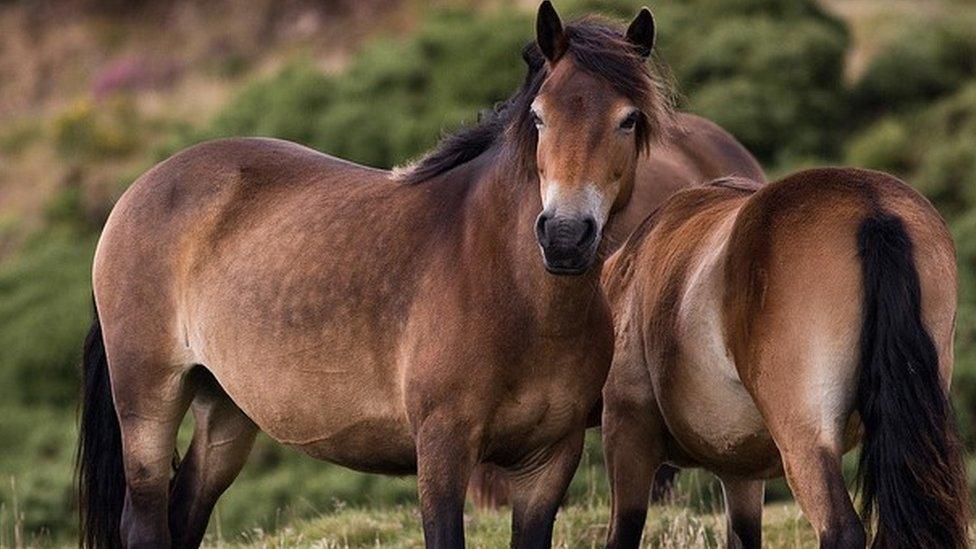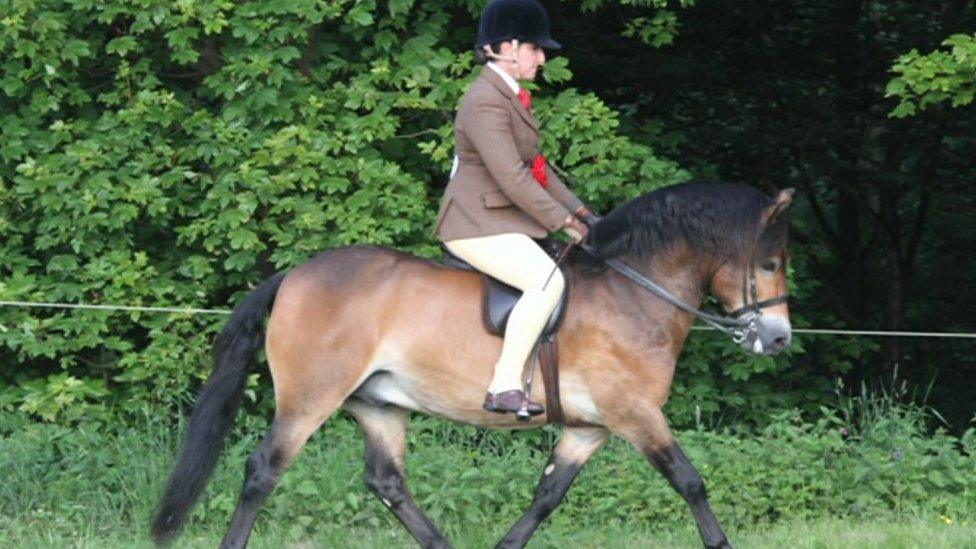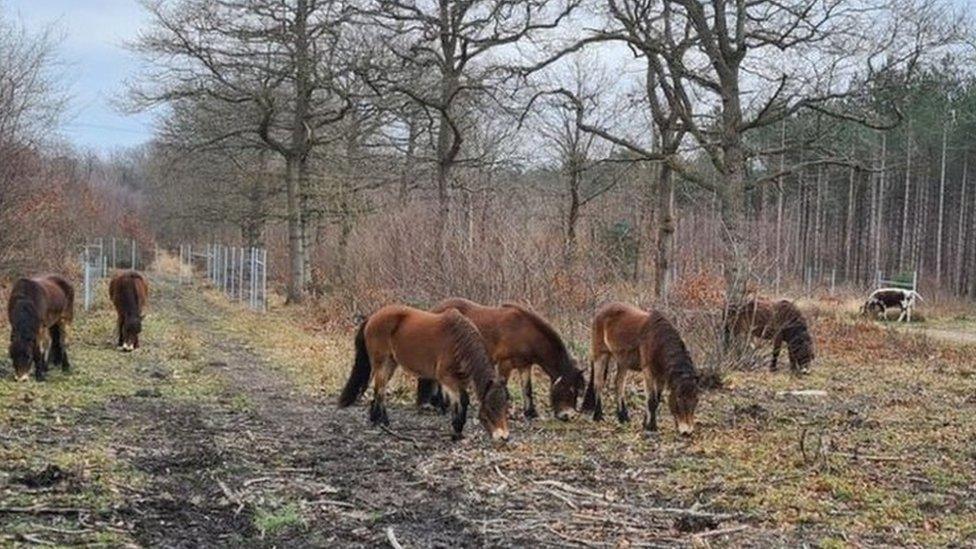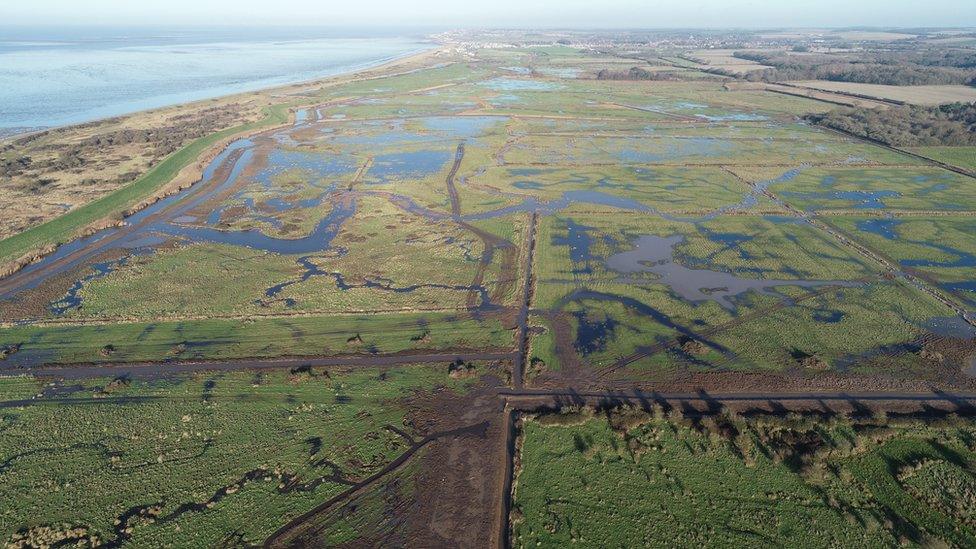Exmoor ponies gene bank set up to save rare breed
- Published

The Exmoor Pony is a hardy breed, which has been on the moor since ancient times
A society established to protect the future of Exmoor ponies has set up a gene bank to help the ancient breed survive.
Mentioned in the Doomsday Book they are now considered an endangered breed.
The Exmoor Pony Society is creating a gene bank to secure the future of the Exmoor ponies and up to 25 stallions are donating semen to the project.
Scientists will select different stallions to ensure a cross-section of genetic material is preserved.
Elsinore Alan Partridge, a 15-year-old registered Exmoor pony, was the first to donate at the equine fertility clinic in Suffolk.
His owner, Madeline Haynes, said she was very proud.

Alan Partridge is a 15-year-old Exmoor pony that has won prizes at many shows
"He seems to have settled in quickly. They are collecting his semen as we speak," she added.
"The Exmoor Society want about 50 doses so he'll spend the next few days donating there [at the fertility clinic] and will be looked after really well."
The Exmoor pony is an iconic native breed in the UK.
The animals have been on the moor since ancient times and the environment has shaped their size, characteristic hardiness, independent spirit and native intelligence.
Surviving on moorland
The isolation of Exmoor has also protected the breed from exotic influences.
Although the majority are now bred in studs throughout the country, herds of semi-feral, free-ranging ponies still live on the Somerset moor.
Exmoor Pony Society (EPS) chairman, Nigel Hill, explained how the breed survives on the exposed heathland.
"You can see on the windswept and rainy Exmoor, they're really well protected with double coats. On the top of their tails they've got a snow chute, which throws all the water off them.
"They really are supremely hardy ponies," he added.

The stallion was named after the comedy character Alan Partridge, his owner said
After World War Two only about 50 Exmoor ponies had survived on the moor.
Since then the number has risen to 4,000 worldwide, although only 600, or 15%, are actively breeding, which makes the Exmoor population vulnerable owing to a lack of diversity.
The Rare Breed Survival Trust currently has the Exmoor Pony on its Category 2 Watchlist for endangered breeds.

There are only 600 actively breeding Exmoor ponies
Mr Hill said the gene bank was intended as an insurance policy.
In future a viable population could be restored from it, if necessary.
"We're collecting semen from stallions from a cross-section of the whole breed that will be stored in a bank to preserve as many of the original bloodlines as possible," he said
"Then if, heaven forbid, the wheel comes off with any of the ponies, or the breed as a whole, we'll have something to go back to and recreate them."
The EPS is setting up a scientific advisory panel of equine specialists to oversee the project, which costs about £100,000.

Follow BBC West on Facebook, external, Twitter, external and Instagram, external. Send your story ideas to: bristol@bbc.co.uk , external
- Published18 March 2023

- Published16 March 2023

- Published28 February 2023
